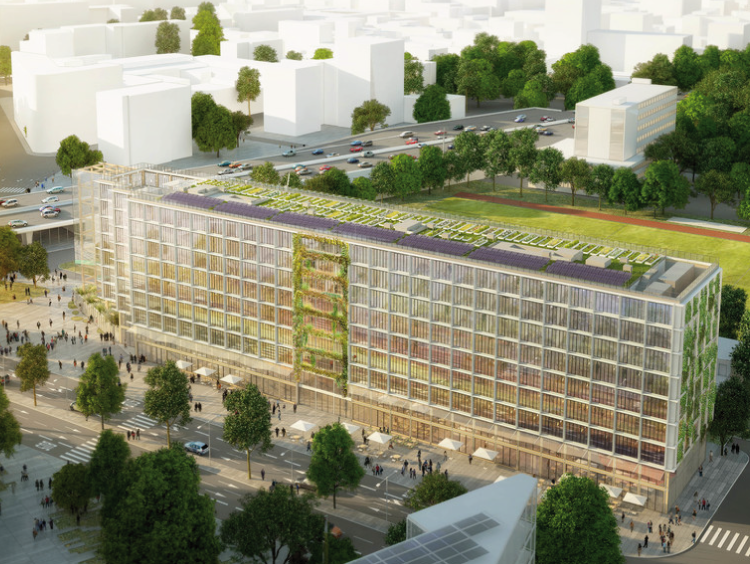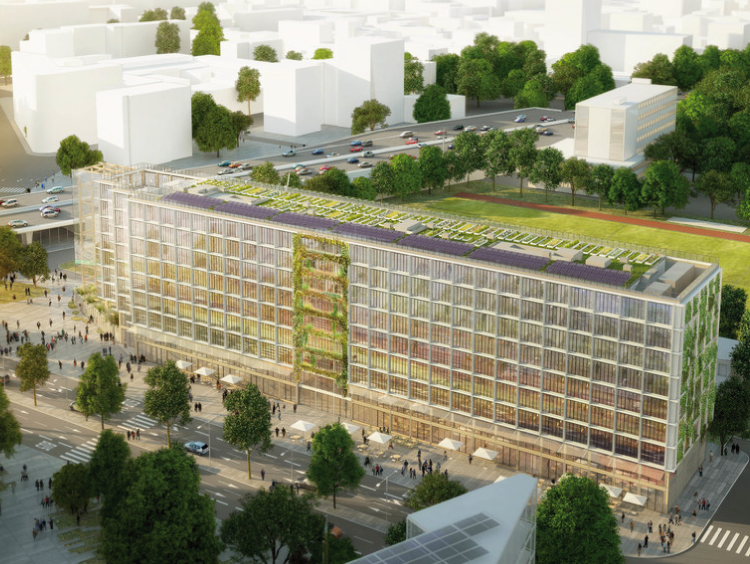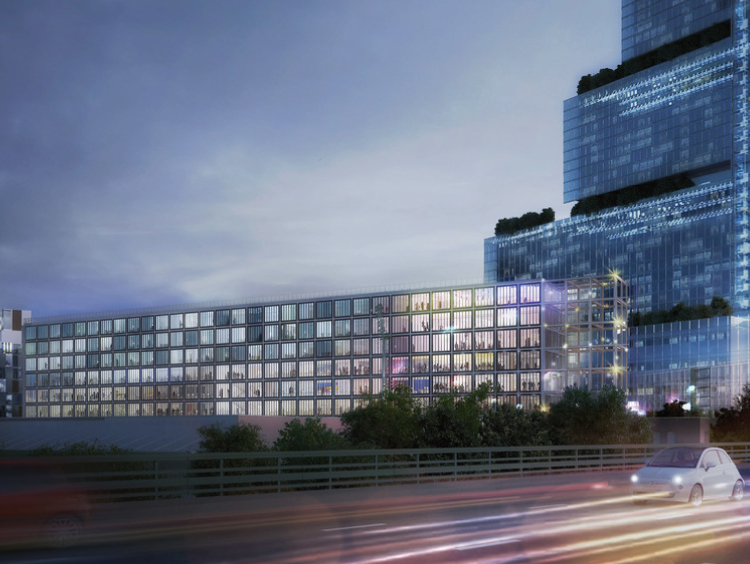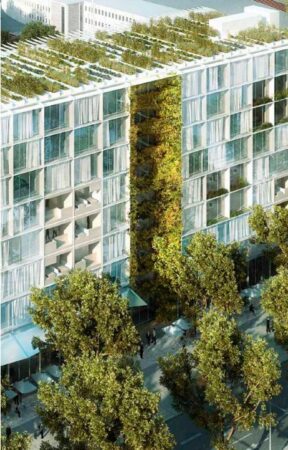The Stream Building is a reversible construction integrated in an urban space, introducing a new type of nomadic, connected and flexible lifestyle.
Rethinking greater Paris
The Stream programme launched in 2015 by Paris local authorities aimed to drive a new type of eco-design policy for stakeholders. 23 sites in Paris were targeted, including the Stream Building programme in the 17th district at Clichy Batignolles. The Stream Building is located at the foot of the Court of First Instance in a district with many potential opportunities and is considered as a test run. This multi-genre project won an award in February 2016. The structure was the outcome of a collective eco-design process managed by PCA STREAM.
A hybrid vision of the Stream Building by PCA-Stream
Lifestyles are changing at the heart of the new district under development, where citizens must be brought back into contact with nature, where work and home lives are no longer kept strictly separate, and yet where shared spaces to meet up are not readily available. The Stream Building was designed to house innovative resources, a cornerstone for meetings and shared facilities, which could be upgraded over the years to meet the needs of society and people. The Stream Building could be considered as an interchange for tertiary workspaces, living areas, consumption, hotel and catering, and cultural activities, not forgetting a nutritious urban fruit and vegetable plot.
This is a mixed building where 25% of the services offered are open to the Stream Eat and Play public, 25% are residential Stream Stay facilities and 50% are reserved for Stream Work spaces. This new hybrid structure is forcing investors to rethink their approach by integrating reversible multi-purpose plans compatible with upgrades as a key design feature for the building. An operator is responsible for operating and upgrading the building in this project.
In line with the new approach to work, lifestyle and living in the Paris area. The Stream Building offers flexible workspaces. At a time when on-the-run working is routine, we are moving away from characterless lean workspaces, and aiming for open areas, or modular spaces which can be adapted to changing activities. The Stream Building is an ideal illustration of the open lifestyles adopted by today’s society.
A living building, reintroducing people to nature
The Stream Building could be defined as a multi-purpose third place, an open and connected area designed to encourage meeting others and discussion. This building aims to act as the beating heart of a changing district, promoting healthy mixing and activity whatever the time of day or night.
PCA-STREAM proposed an urban agricultural model with a 1,200 m² fruit and vegetable plot on the building roof. This plot is the starting point for a virtuous food cycle: from growing organic produce to selling the yield without packaging in a grocery store at the foot of the building, as well as consuming the output in the restaurants housed in the building, not forgetting harvesting and food processing by associations helping people to enter the workplace. Hop is grown on the building façades, and will be brewed locally to allow the bars and restaurants in the Stream Building to sell a local beer. This short supply chain brings benefits for all, growers and consumers. Basically the project plays a social role.
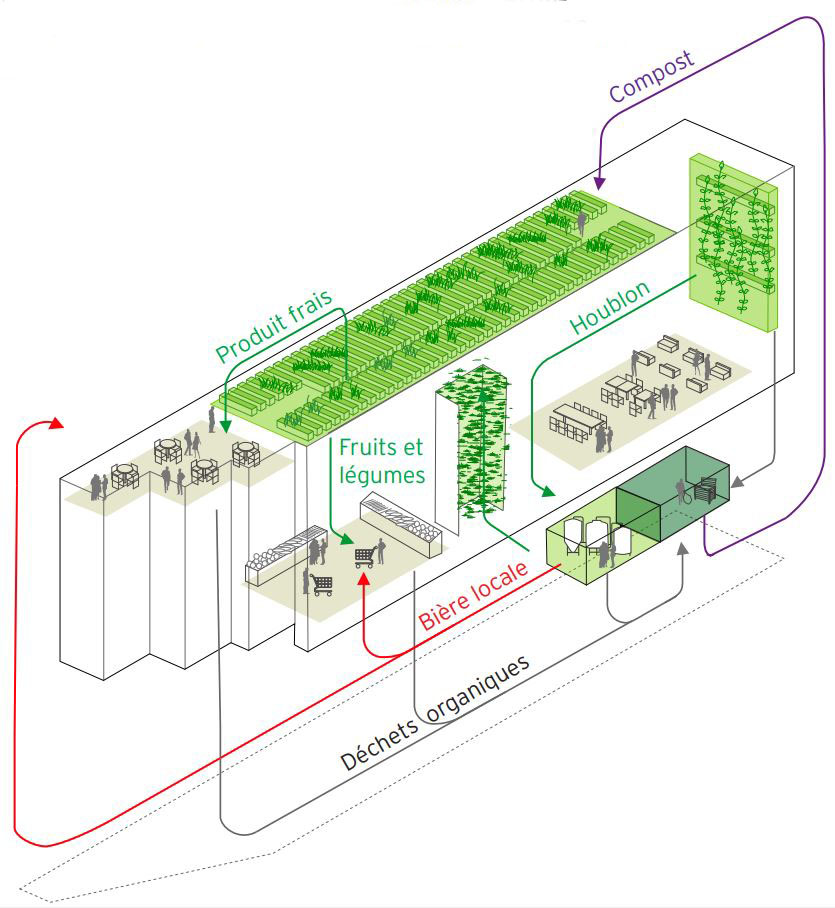
StreamBuilding principle – © STREAMBUILDING
A reversible and multi-faceted construction model
A combined wood and concrete structure was selected based on a quick installation and the small carbon footprint of this type of dry construction method. The design of the Stream Building is totally reversible, no matter what the building is ultimately used for.
The building is a "resilient architectural prototype, able to adapt to fluctuating populations and markets. In twenty years' time, the many floors of the building might well host a hotel, accommodation, a cultural programme or public facilities." Source : https://www.pca-stream.com/fr/projets/stream-building-7
This is a new, more responsible and sustainable approach to spaces and constructions. 3.2 million dwellings are currently vacant in France and over 5 million offices stand empty, which represents 70,000 potential accommodation units left unused due to excessive transformation costs. Planning ahead for the transformation costs for a building simplifies a future change of use to meet the needs of society.

